As development moves apace at the recently established Tabatinga Housing Scheme in Lethem, residents there are anticipating an increase to the already growing population at the small border community.
Tabatinga , which lies west of Lethem on the border with neighbouring Brazil, has seen several areas of infrastructural development which many residents within the community are hoping will be transformational.

The community has grown over the past three years into a pivotal housing area which the regional administration is working to develop in order to market it and create opportunities in the various sectors of development.
During a recent visit to the area, residents told Stabroek News that over time the housing scheme has seen many persons, mainly coastlanders, setting up houses within the area while the administration has undertaken road, pipe-laying and other infrastructural works to further develop the community.
Businessman Milton Benjamin told this newspaper that he had been living at his ‘corner lot’ close to the Tabatinga Creek for more than 6 years and he said that he has seen the community evolve into what it has become today.
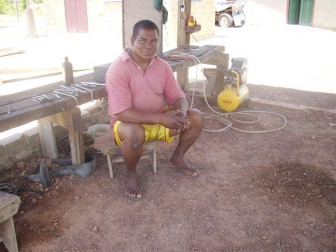
He said that in the years gone by, the area was “just a lot of bush. All what you seeing in front my place here was bush.” But he noted that as the nearby Takutu Bridge drew closer to becoming a reality, the regional administration as well as residents, worked towards “making it more presentable so that we could benefit in some way”.
Benjamin, a father of two who operates a small grocery business at Tabatinga noted that the area has been “trouble free” to date in terms of crime, adding that since most persons in the area know each other there is little room for criminal activity.
Benjamin said many persons from the coastland are “rushing” to purchase house lots at Tabatinga. “It got its benefits but we who living here supposed to get first preference but once people in town got their money they will get through,” Benjamin said. He added too that the area was lacking in several “urgent” forms of development, among them were the absence of street lights, street names and paved roads.
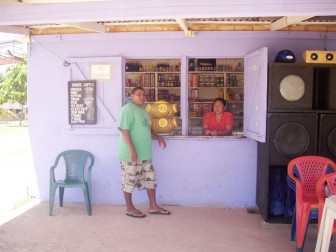
Benjamin said that life for him at Tabatinga has been “mostly positive”, since according to him, many persons operating businesses in the area have seen their small establishments develop overtime, as customers from both sides of the border are always “available”.
Further south into the community, housewife Mary George told Stabroek News that since she relocated to Tabatinga less than two years ago, she too has seen the community grow. George, who lived at Sand Creek, a community located further south of Lethem, said that most people within the community were “now getting to know each other”.
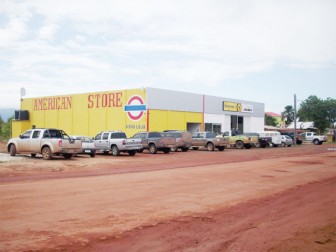
George, whose husband Roderick George, a former headmaster has been a popular figure within the Region 9 area, said that she and her husband moved to the community to spend their “retirement years”. The elderly woman described the area as quiet, breezy and peaceful and she noted that each day she is afforded an opportunity to tend to her garden where she cultivates mainly cassava and cash crops.
She said that the general ambience of the community excites her longing to see Lethem as a whole develop towards being a small town.
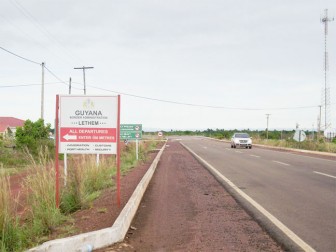
George noted too that the Brazilians would travel through the housing area almost hourly and this was among the many “occurrences” that she saw as good for the community to progress.
A few weeks ago the authorities constructed several culverts throughout the area, west of the Tabatinga Creek, while the roads at the southern section of the area were paved recently although works halted temporarily to address preparations for the recently held Rupununi rodeo.
Popular mechanic, Stewart Charles, a stalwart in his trade, said that he has been living at Tabatinga for close to 14 years and never in his wildest dreams did he expect to see the community being transformed into what it is today. “You have to give credit to the people who stayed here through the [tough] times,” Charles said. He said that he settled in the community not knowing what the future for the area held, but like his neighbours at Tabatinga, he noted that the Takutu Bridge has “made the difference” in recent times.
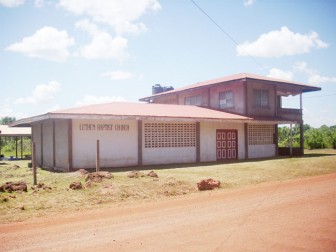
Giving his background at Lethem, the father of five daughters said that he lived on the eastern side of the Tabatinga Creek at Lethem for most of his youth before relocating the other side of the creek to the housing scheme in 1997.
Charles said that he worked with the Baha’is in the area as a driver and over time was able to develop his skills as an auto mechanic. He has since completed several courses in the field and has been the regional administration’s service man for vehicles operated by the department. He said he has been happy to “pass on my knowledge to youths in the area”, while his wife has been a capable assistant in his field of work.
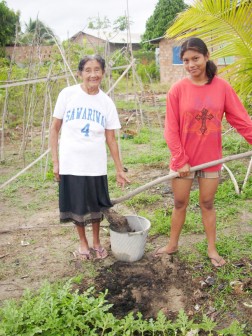
He said that his community was moving towards being recognized as a developed area with the various forms of house styles and different cultures of people moving into the area.
While pipelines are being run through the community, householders have dug their own sources of water in the form of wells, which have been dug 20 to 30 feet into the earth. At the same, the area receives electricity from the nearby Lethem Power station while medical and emergency services are a 5-minute taxi ride away at the Lethem Regional Hospital.
While a few churches have been established in the community, residents believe that in time the religious community will capitalize on the growing population.

With a population of 500 plus and growing, residents of the housing area told Stabroek News that many persons would continue to move south of the country to Lethem in larger numbers, as the region as a whole has seen a significant influx of coastlanders relocating there in recent times as the area was poised to develop into Guyana’s newest town.








